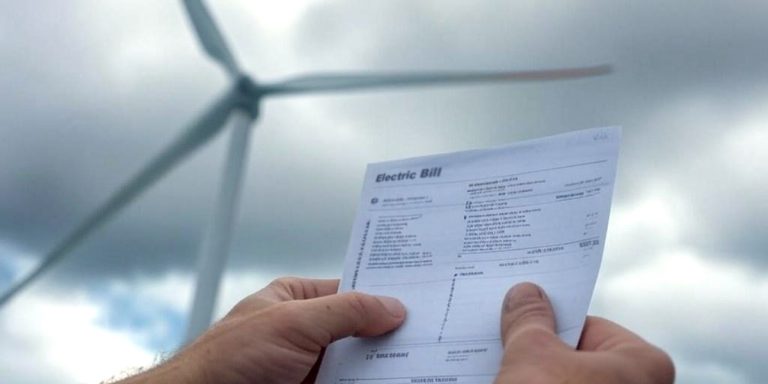
As countries increasingly use seemingly cheap solar and wind power, something strange is happening: Our electricity bills are getting more expensive. [emphasis, links added]
This exposes the lies of environmentalists that renewable energy has surpassed fossil fuels and that the “green transition” is irreversible even under a second Trump administration.
The argument that green energy is cheaper relies on spurious math that measures the cost of electricity only when the sun is shining and the wind is blowing.
Modern society requires round-the-clock power and requires backup power, often powered by fossil fuels. This means we are paying for two power systems: renewable energy and backup power.
Additionally, as the use of fossil fuels decreases, these power sources need to recoup their capital costs in less time, making electricity more expensive.
This means the actual cost of energy from solar and wind is much higher than green campaigners claim. One study shows that the real cost of solar power generation in China is on average twice that of coal power generation.
Likewise, a peer-reviewed study of Germany and Texas showed that solar and wind energy are many times more expensive than fossil fuels.
Germany, the UK, Spain and Denmark are all increasingly reliant on solar and wind power, and their electricity is the most expensive in the world.
The International Energy Agency's latest data (from 2022) on the cost and consumption of solar and wind power in nearly 70 countries shows a clear correlation between more solar and wind power and higher average household and industrial energy prices .
In a country with little or no solar and wind energy, the average cost of electricity is about 12 cents per kilowatt-hour (in today's money).
Every 10% increase in the share of solar and wind energy increases the cost of electricity by more than 5 cents per kilowatt hour.
This is not an outlier; These results are largely similar to those seen in 2019 before the impact of the pandemic and the war in Ukraine.

Take Germany for example, where electricity is expensive 30 cents per kilowatt hour——More than twice the cost in the United States and more than three times the price in China.
Germany has installed so much solar and wind energy that on sunny and windy days, renewable energy can meet nearly 70% of the country's needs – a fact eagerly reported in the media.
But the media barely mentions the dark and silent days when these renewable energy sources offer almost nothing. On two occasions in the past two months, when the weather was cloudy and almost windless, solar and wind energy provided less than 4% of Germany's daily electricity needs.
Current battery technology is not enough. Germany's entire battery storage was depleted in about 20 minutes. The remaining energy for more than 23 hours is mainly provided by fossil fuels.
Last month, the sky was cloudy and there was almost no wind, Germany faces its highest electricity prices since Russia's invasion of Ukraine triggered an energy crisis in 2022, with wholesale electricity prices reaching a staggering $1 per kilowatt hour.
At the very least, climate-obsessed European governments are generally being honest about the costs of solar and wind energy and raising electricity prices accordingly, putting consumers directly under the pressure of green energy policies.
In comparison, in the United States, Consumers pay for solar and wind energy indirectly through tax breaks and subsidies.
The federal government will spend more than $20 billion on solar and wind credits by 2024, supplemented by state subsidies. Texas received about $2 billion in federal subsidies last year, and state subsidies are at least three times that cost.
This suggests that total hidden costs across the United States could exceed $60 billion per year, meaning that the actual cost of solar and wind power is much higher than the stated price.
Poor countries are especially hurt by the lie that green energy is cheap. Rich countries often refuse to help poor countries with their fossil fuel projects.
If solar and wind power were truly cheaper, the world's poorer countries would easily jump from today's energy poverty to energy abundance. The only new energy infrastructure is solar and wind energy.
But this only happens in rich countries Our solar and wind cheating is made possible by generous subsidies and existing fossil fuel backup infrastructure.
In poorer countries, electricity consumption will increase by almost 5% from 2022 to 2023, most of it from fossil fuels, with coal contributing more than all solar and wind energy increases.
During this period, China added more coal than new solar and wind energy. The amount of new coal added in Bangladesh is 13 times that of solar and wind energy. Although India has ambitious solar targets, its coal additions are three times greater than those of solar and wind.
Bjorn Lomborg is the Chairman of the Copenhagen Consensus, a visiting fellow at the Hoover Institution at Stanford University, and the author of “False Alarm” and “Best Things First”.
Read “Break” from The Wall Street Journal [Archive here]
